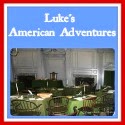The ship's log was important, because it was often the only written record of events that happened aboard the ship. In the explorers' time, it was useful for a captain to study recent journeys. Weather patterns could be found, and the sailors would know when it was a better time to sail. Those acquiring provisions could study past logs to determine how much food they needed to pack so the men neither starved nor rebel. Reading how ships survived the voyage (or did not, because the sinking of many ships was recounted in others' logs) helped shipbuilders adapt their practices to make them better.
Modern historians still find great value in the logs. We have learned many things about the explorers' voyages by reading their log books. By reading Columbus' log, we are able to see how he thought he found the East Indies. We can see how long and treacherous the journey was, and how the slightest storm can throw a ship off course. (This explains how the Mayflower ended up at Plymouth Rock instead of the Virginia colony.) Embarking on a sea journey was exciting but treacherous, and these books show us the fortitude these men showed when they set off with the outgoing tides.
Captain’s
log for the Cardinal Jesús
Sailing Friday, the fifth of August, in this Year of Our Lord
1501
Ship’s contents:
Thirty sailors, two Franciscan priests
Ten barrels each of dried beef, venison, and pickled limes.
Five barrels each of rice, dried maize, and biscuits.
Sixty chickens, ten hogs, and five barrels of feed
Four barrels each of fresh water and wine.
Forty-five trees’ worth of oak and birch for trade.
Day One
We set sail from the port of Maria on our ship, the Cardinal
Jesús, on the outgoing tide at three minutes past seven o’ clock in the morning . We sailed S. to
exit the port, then S. E. to get around the land of San Juan, and then N. by E.
for thirty miles in the direction of our homeland of Spain, with a strong sea
breeze in our sail until dusk.
Day Twenty-six
We have been at sea for a little over two weeks, and we
have not had any difficulty keeping on our charted route to Spain. We have had days where we
had moderate gusts of wind, but other than that, we have not had severe weather so
far. Our two priests, Father Robert and Father Vincent, bless each day's voyage every dawn, and so far the Lord has answered our
prayers.
Day Forty-five
We just exited a tremendous storm of three days' duration, with the loss of two sailors and a mast. Thirteen-year-old Marcus Smith was swept overboard by the rainy sea, and James Thompson was crushed by the timber of the fallen mast. A Funeral Mass, led by Father Vincent, will be held tomorrow at sunrise after prayers. Following the Mass, we will attempt to regain our charted course.
Day Sixty-seven
We reached the Islands of Azores only a week behind schedule
due to the storm about three weeks ago. We stayed the night in the bay there to
take on fresh provisions, as due to the storm’s delay, the ship was nearly devoid
of food, and continued on to Spain.
Day Eighty
Thanks to favorable winds, we made up much of the lost time from the storm and made it to our
destination safely only one day late. We unloaded our cargo and had the ship
towed into dry dock, where it will be checked for damage before its
next expedition, due to begin in about one month.

©2012- 2013 Adventures with Jude. All rights reserved. All text, photographs, artwork, and other content may not be reproduced or transmitted in any form without the written consent of the author. http://adventureswithjude.com



No comments:
Post a Comment